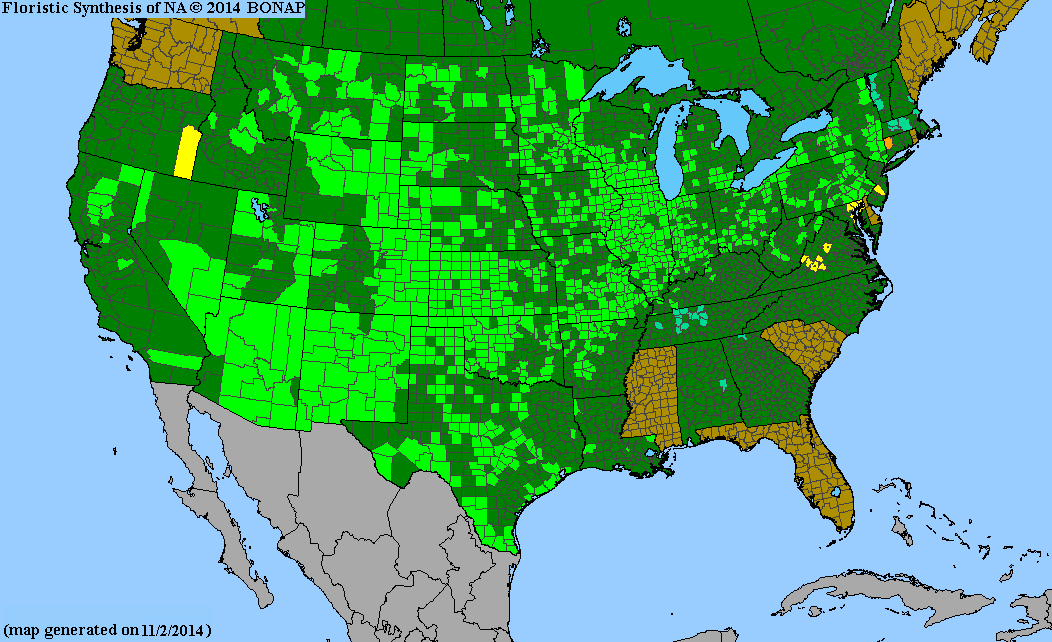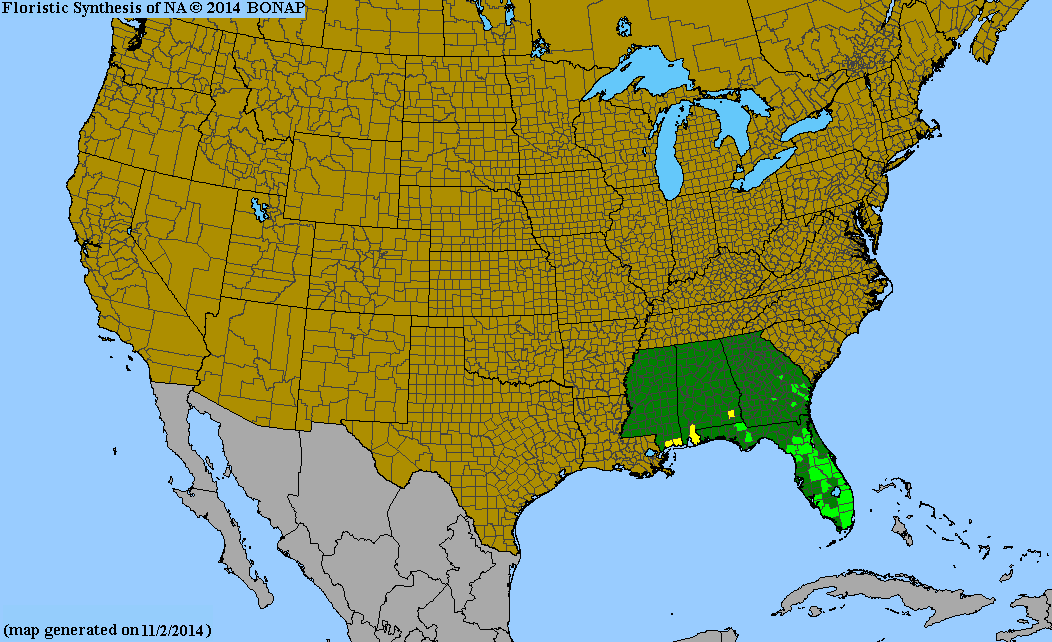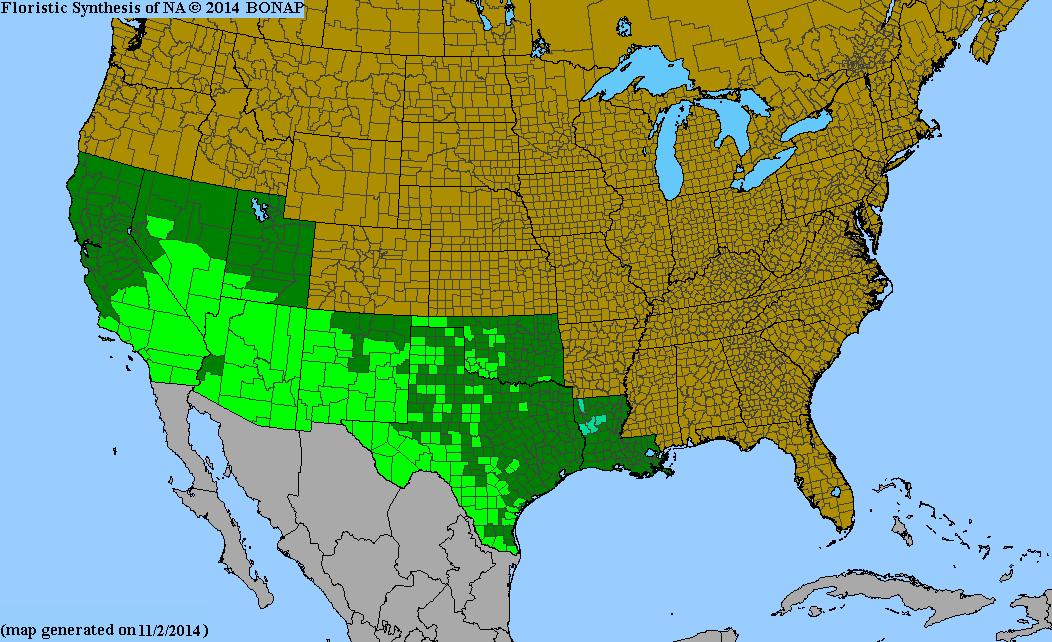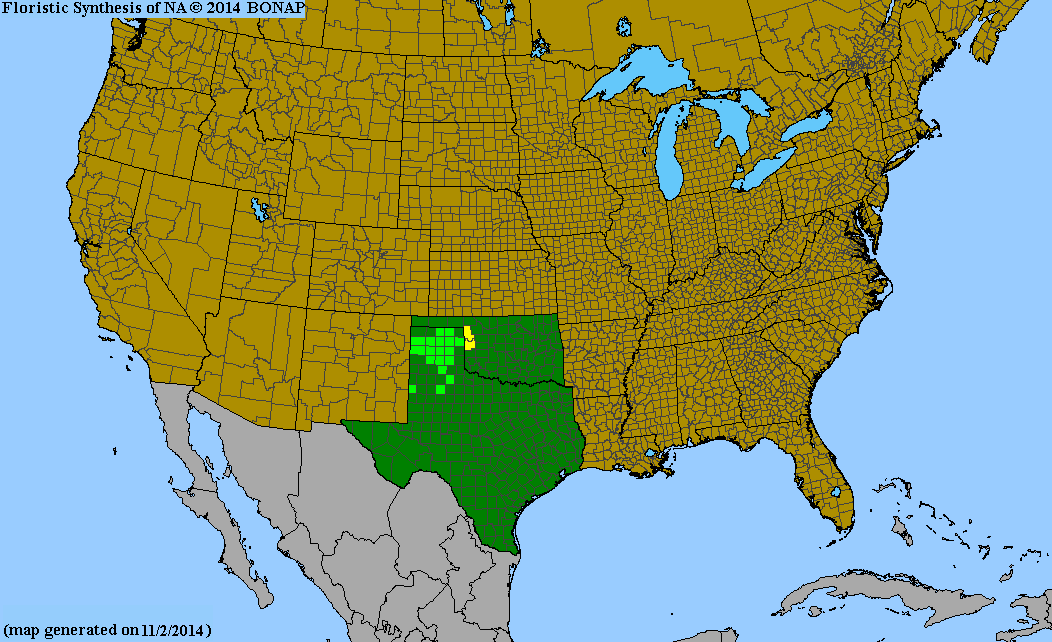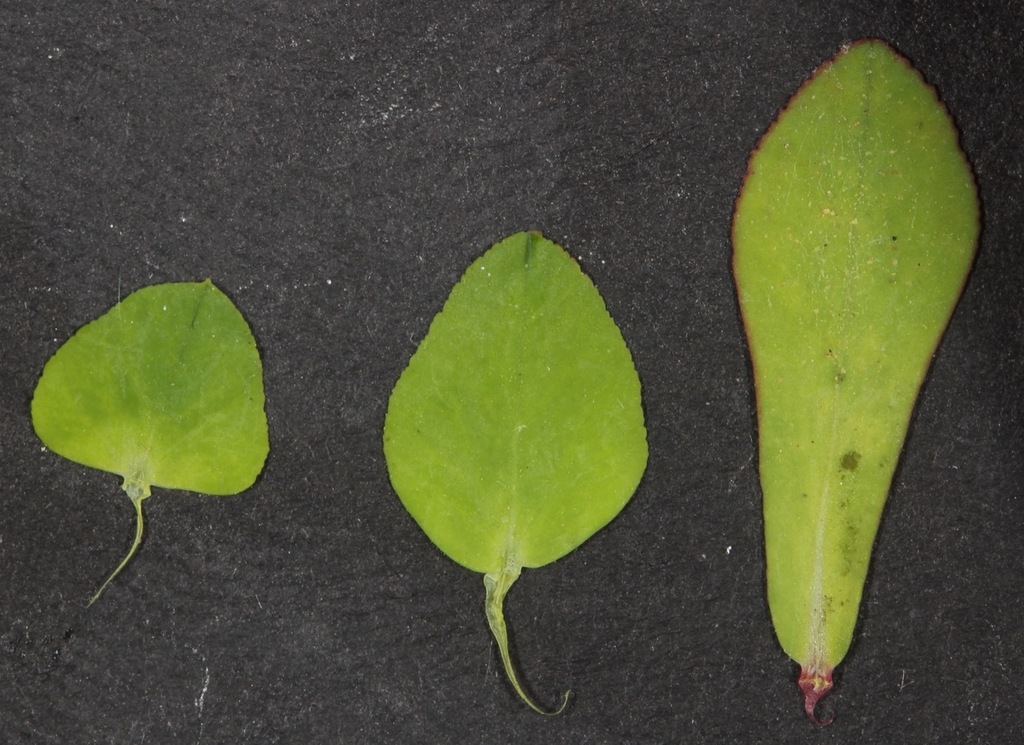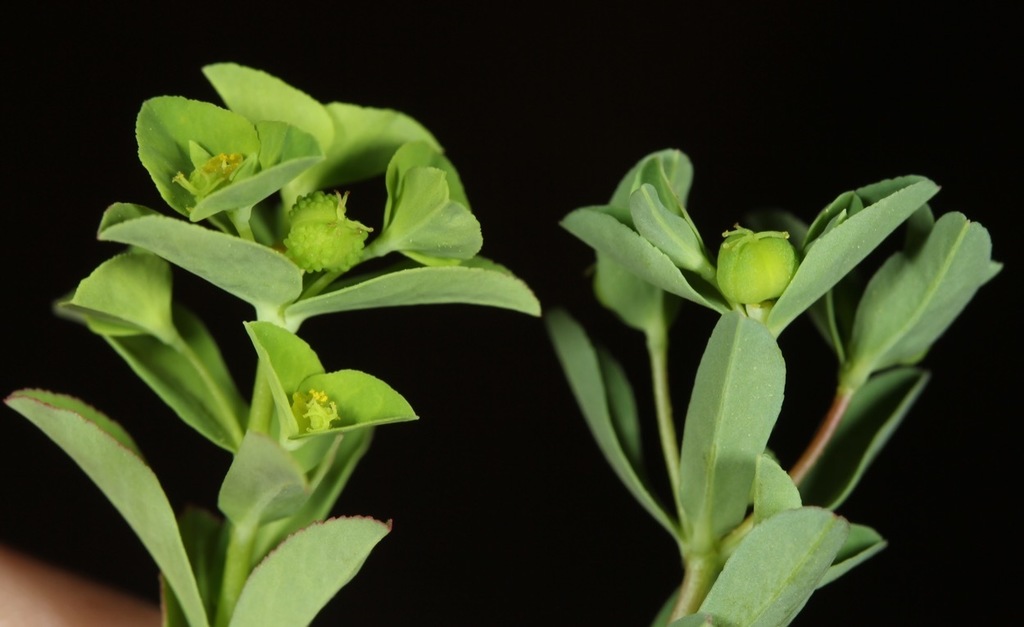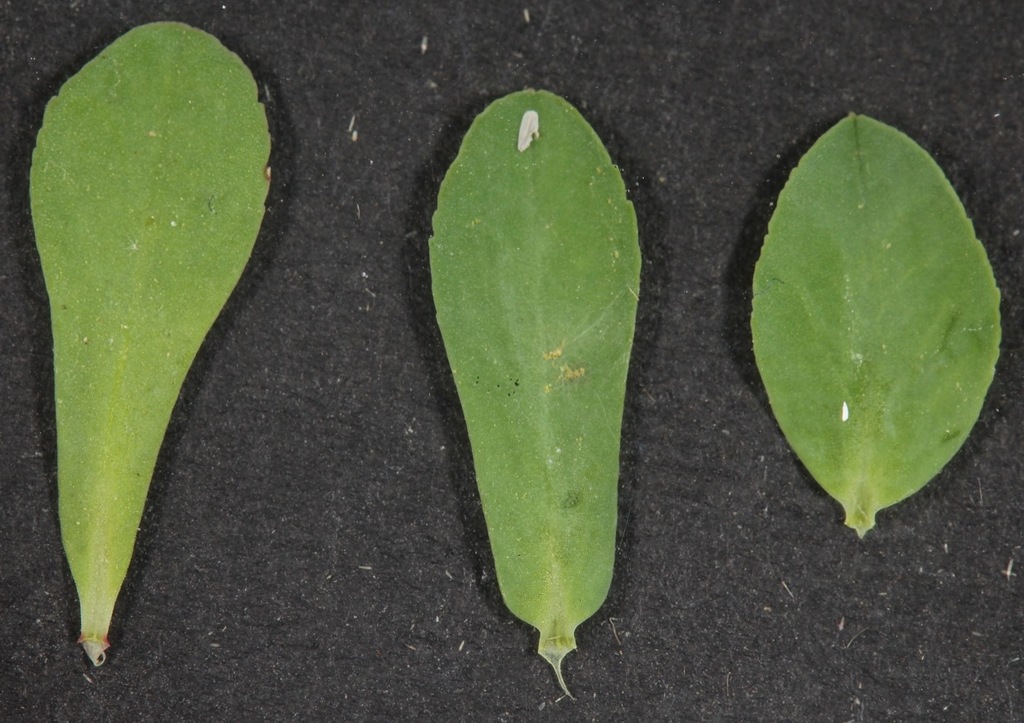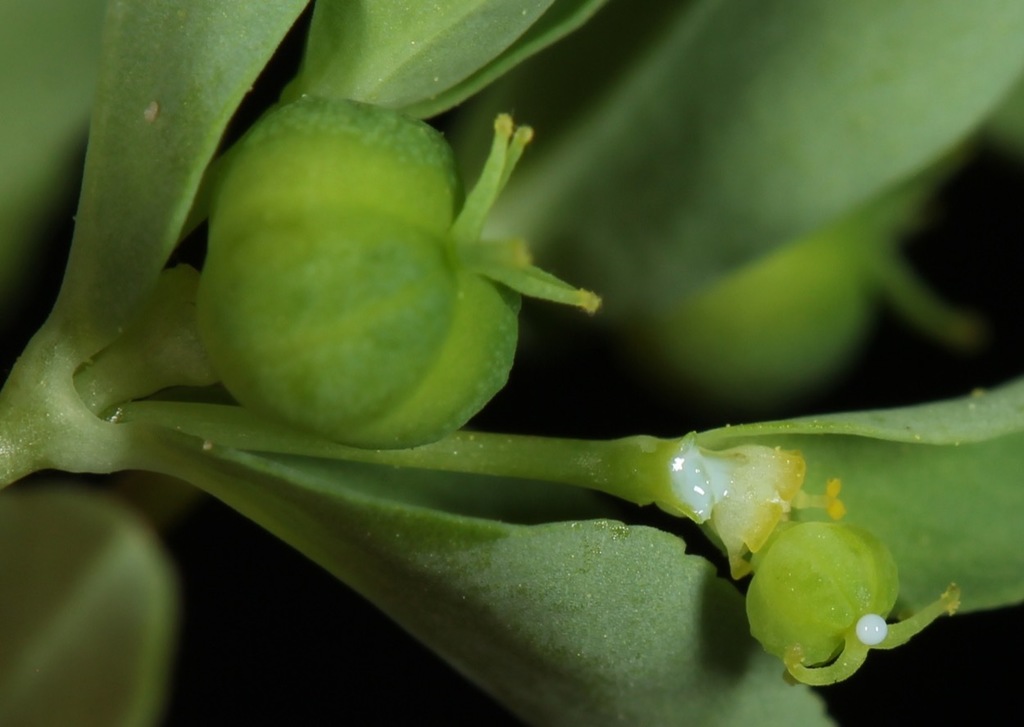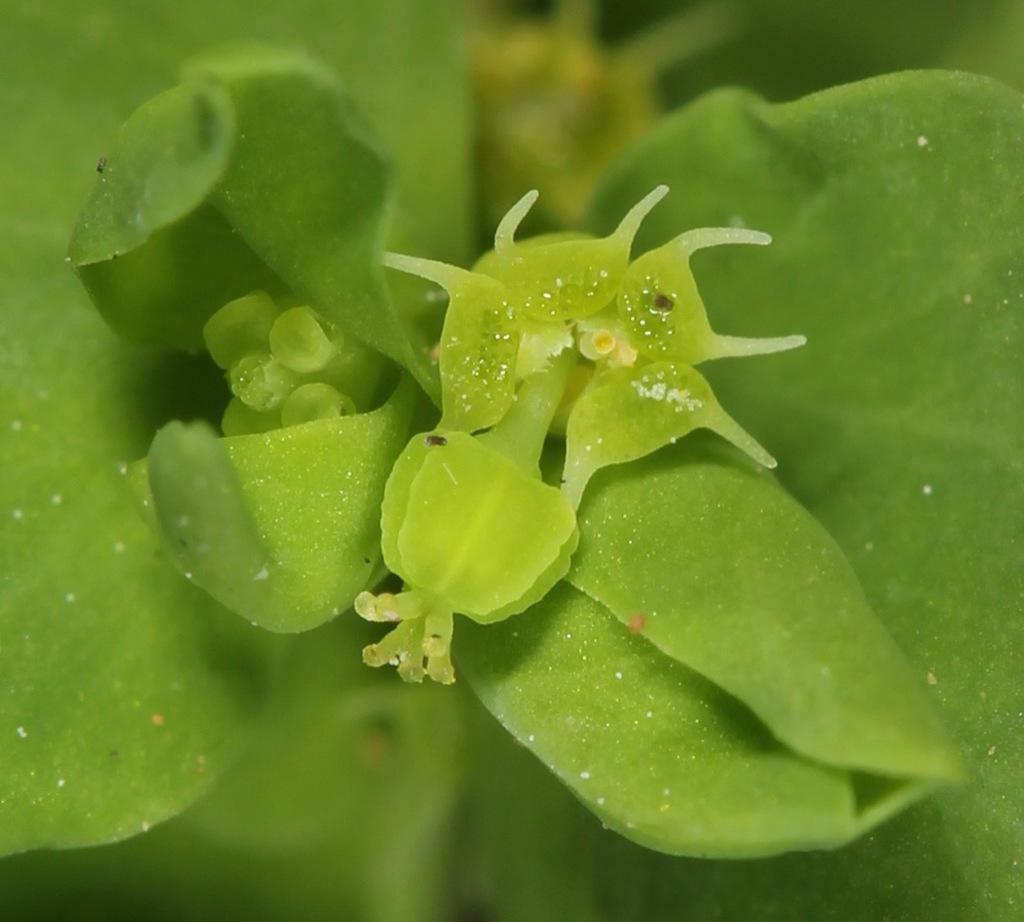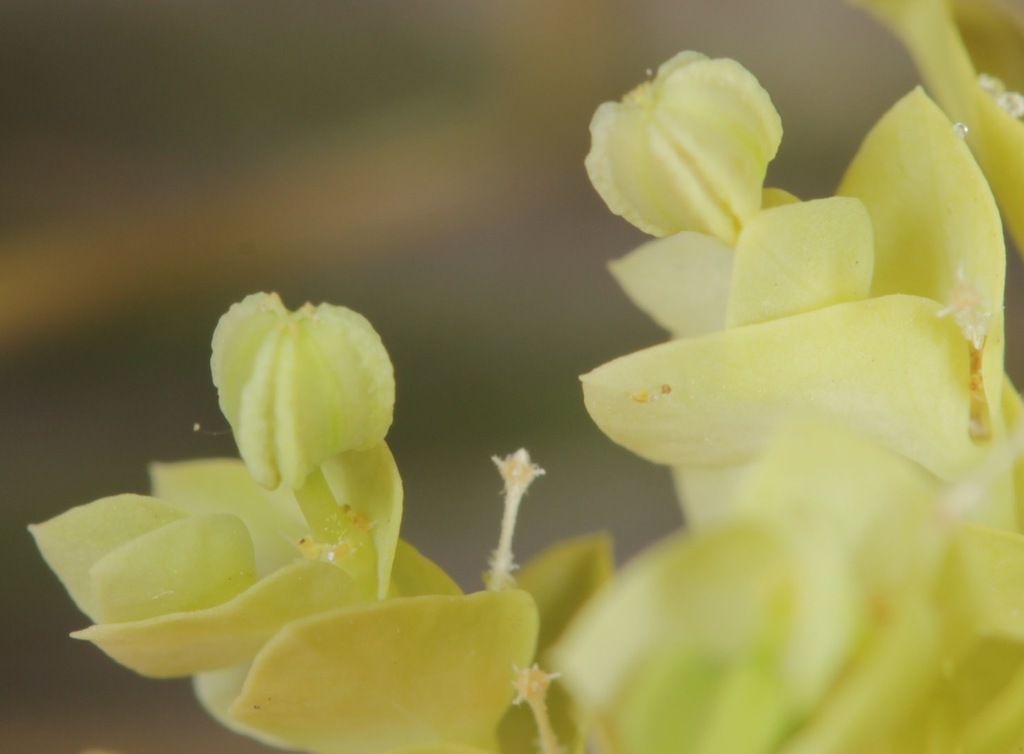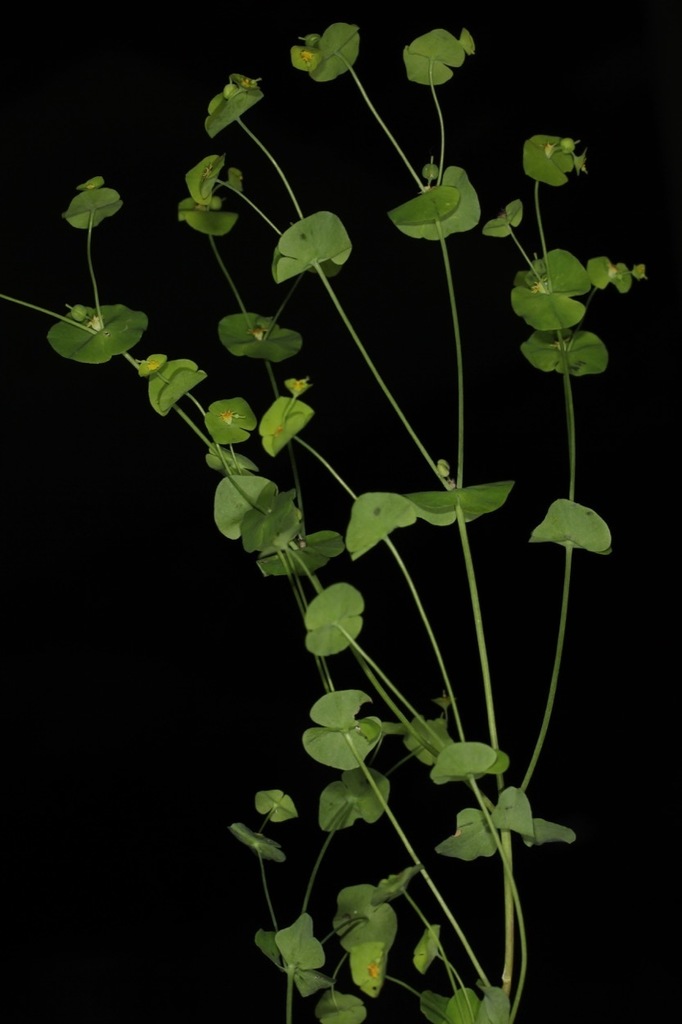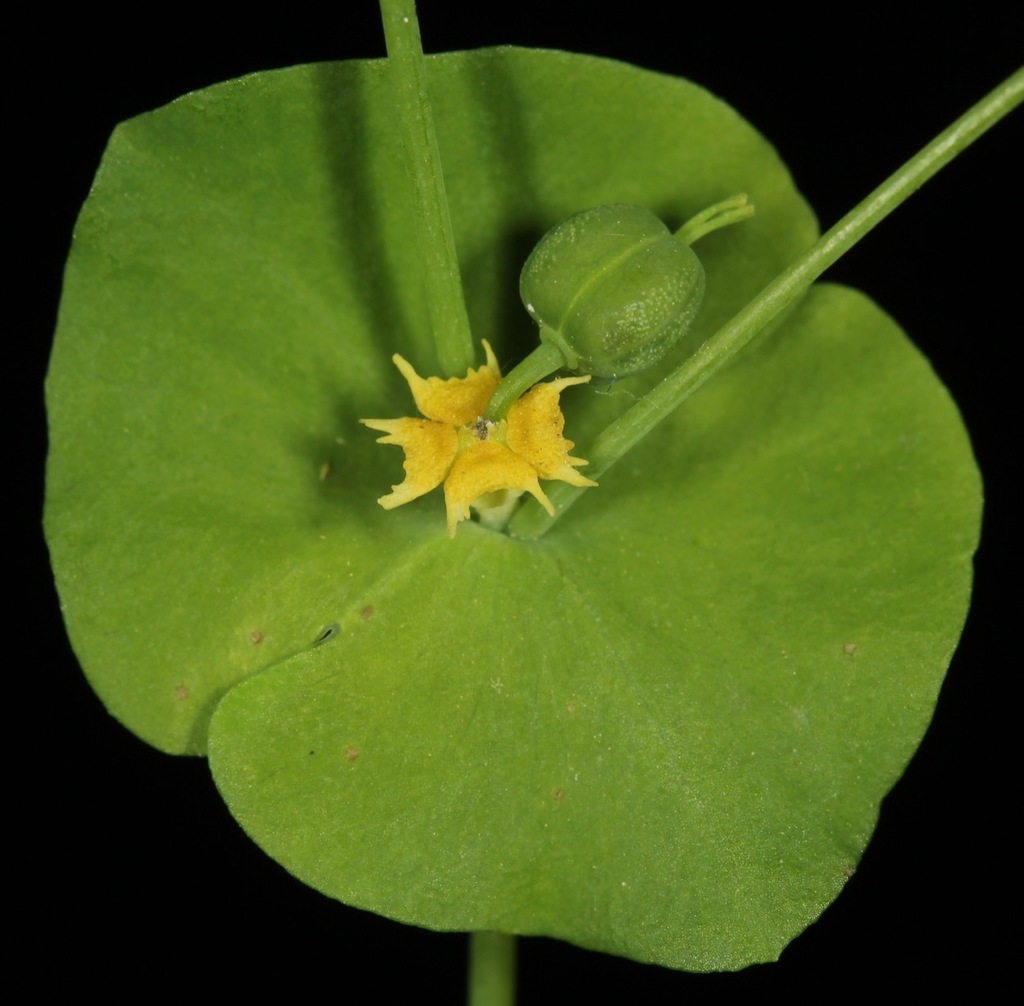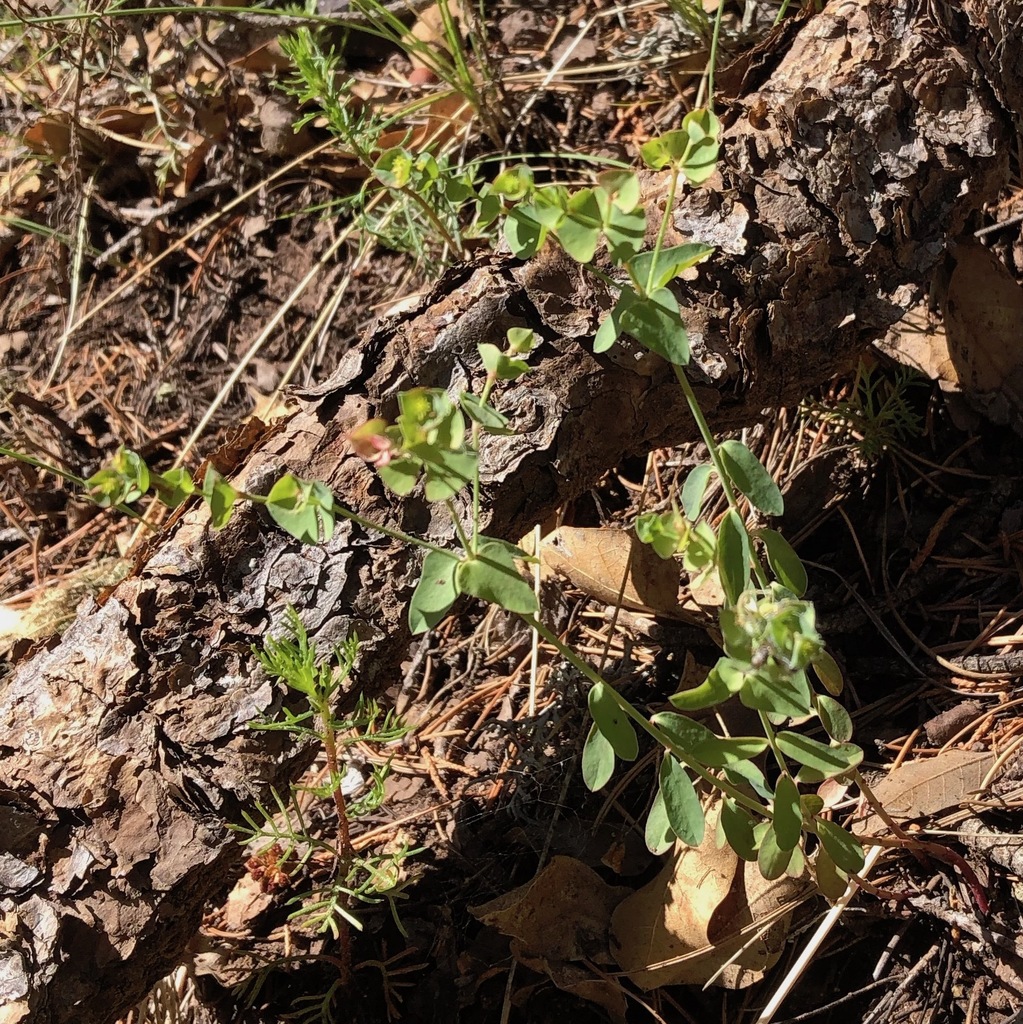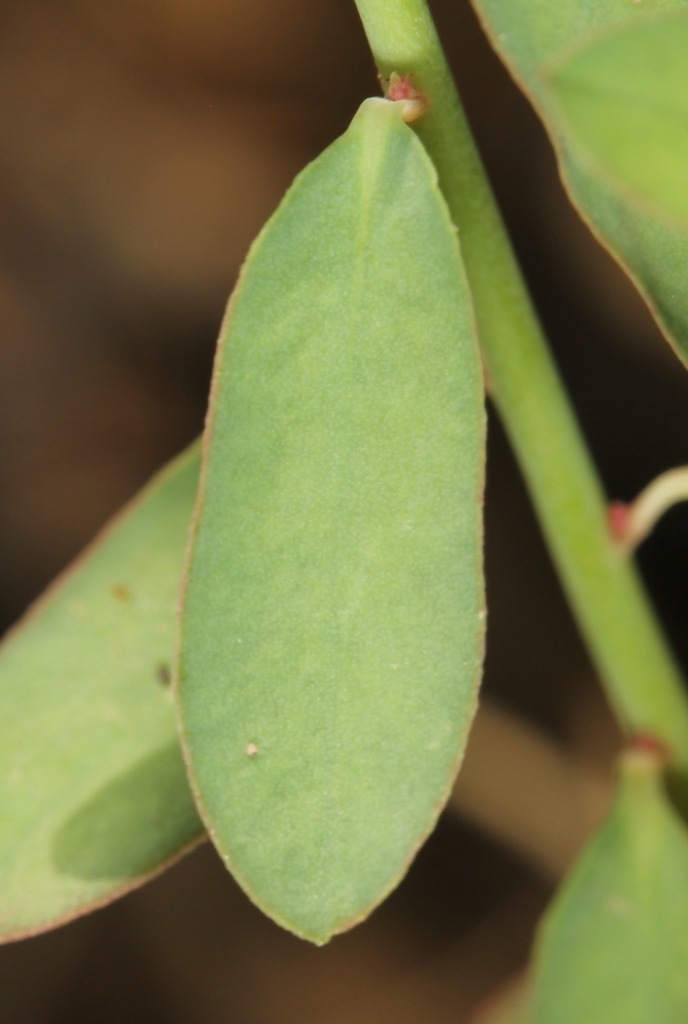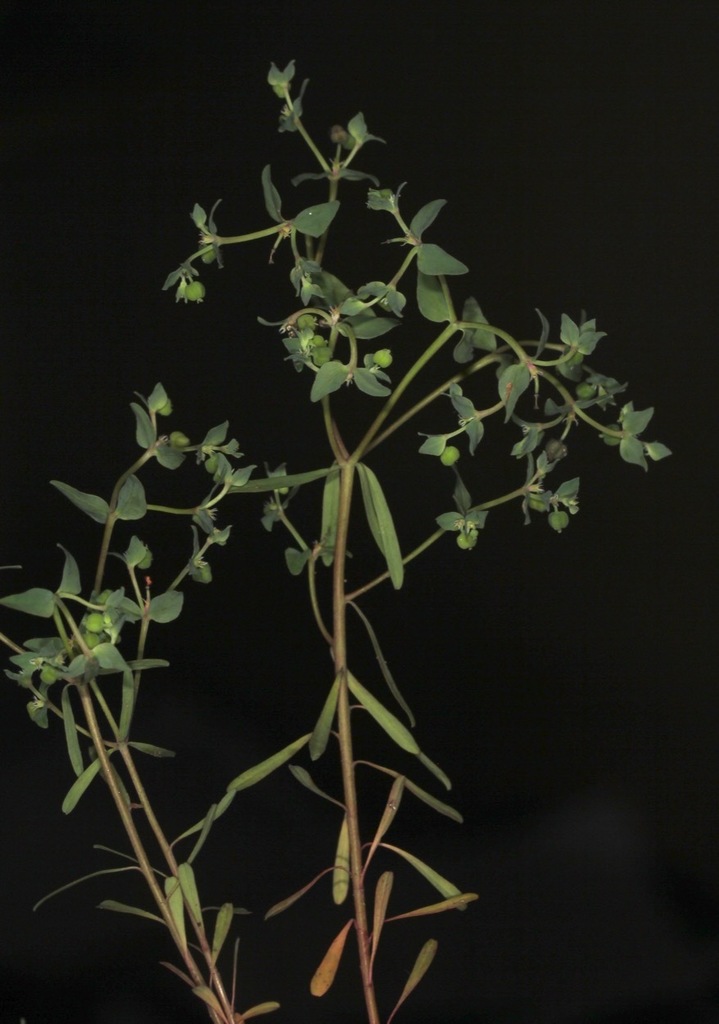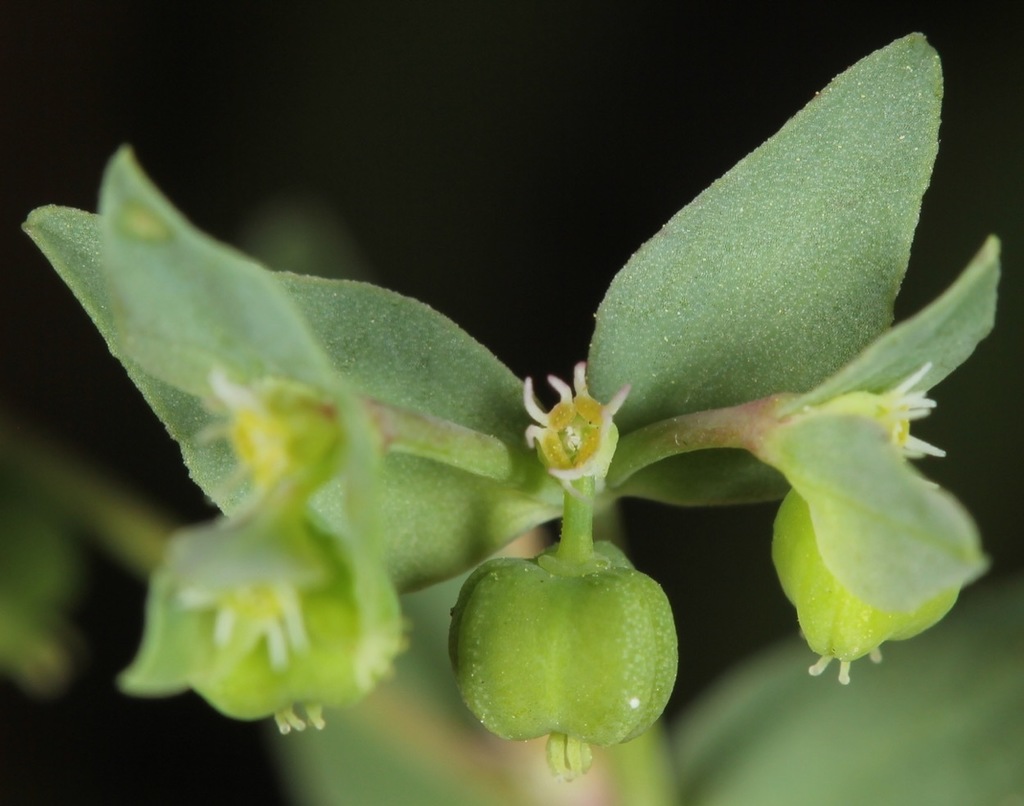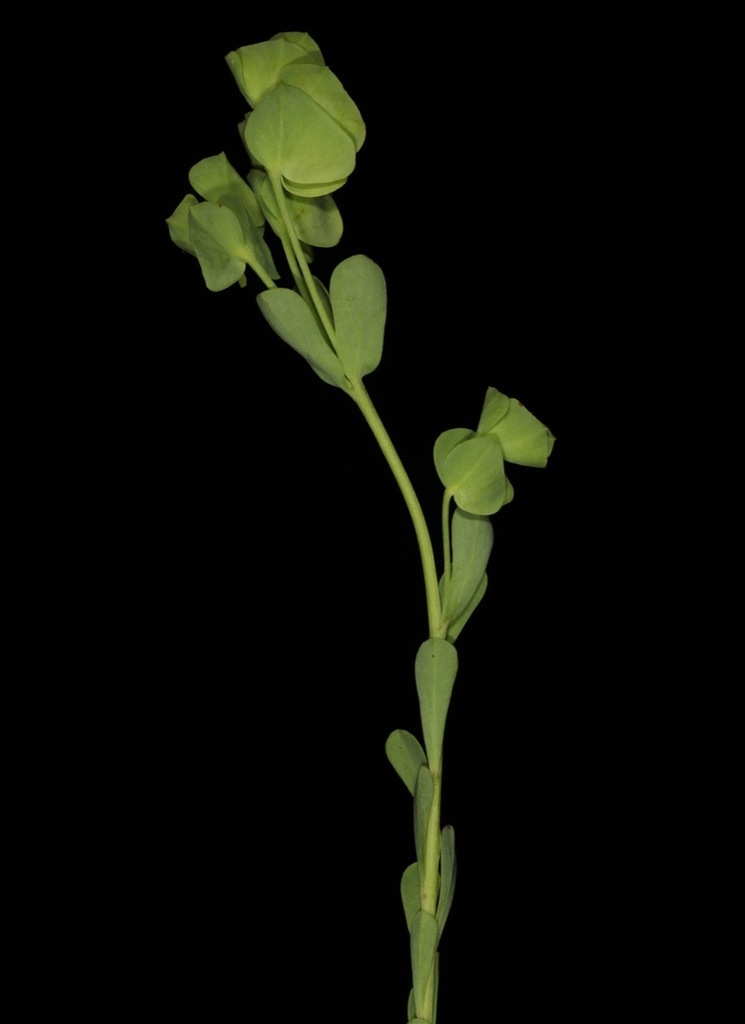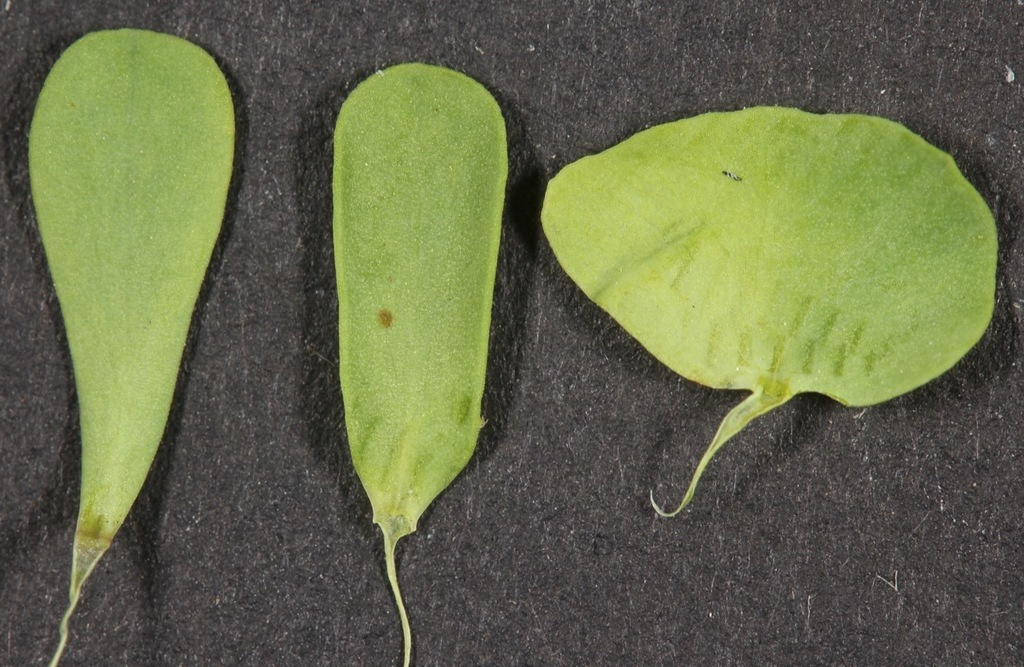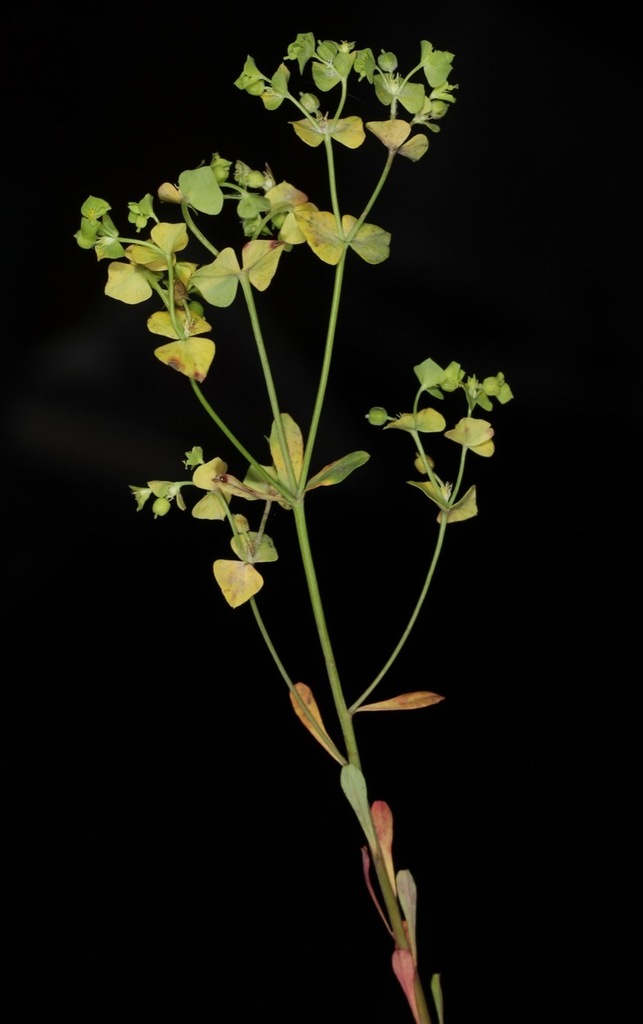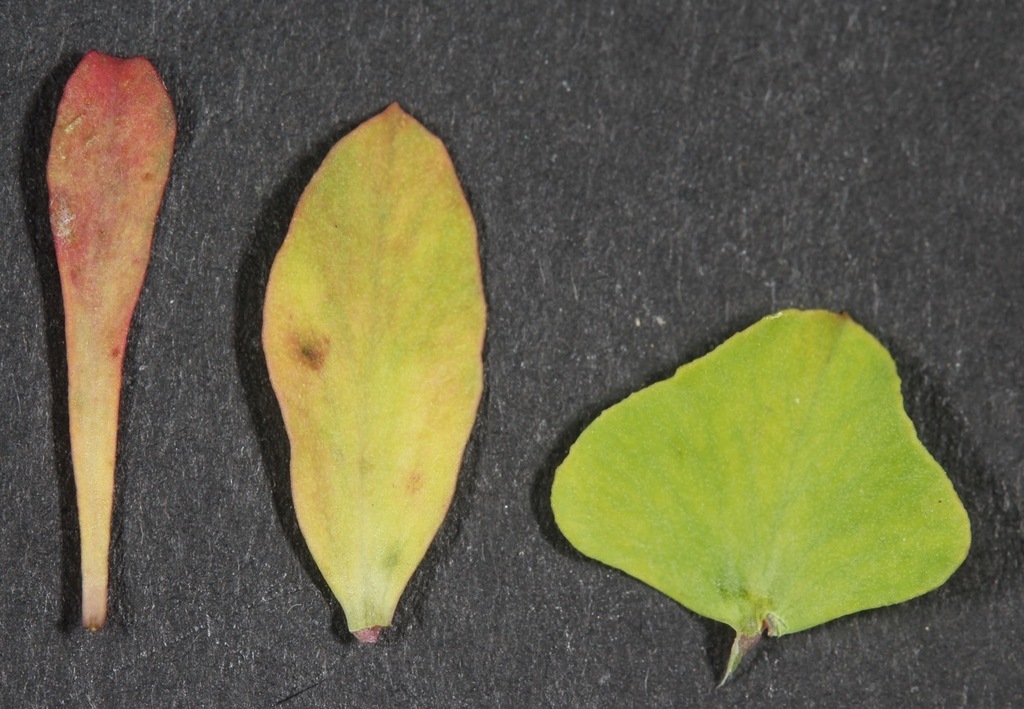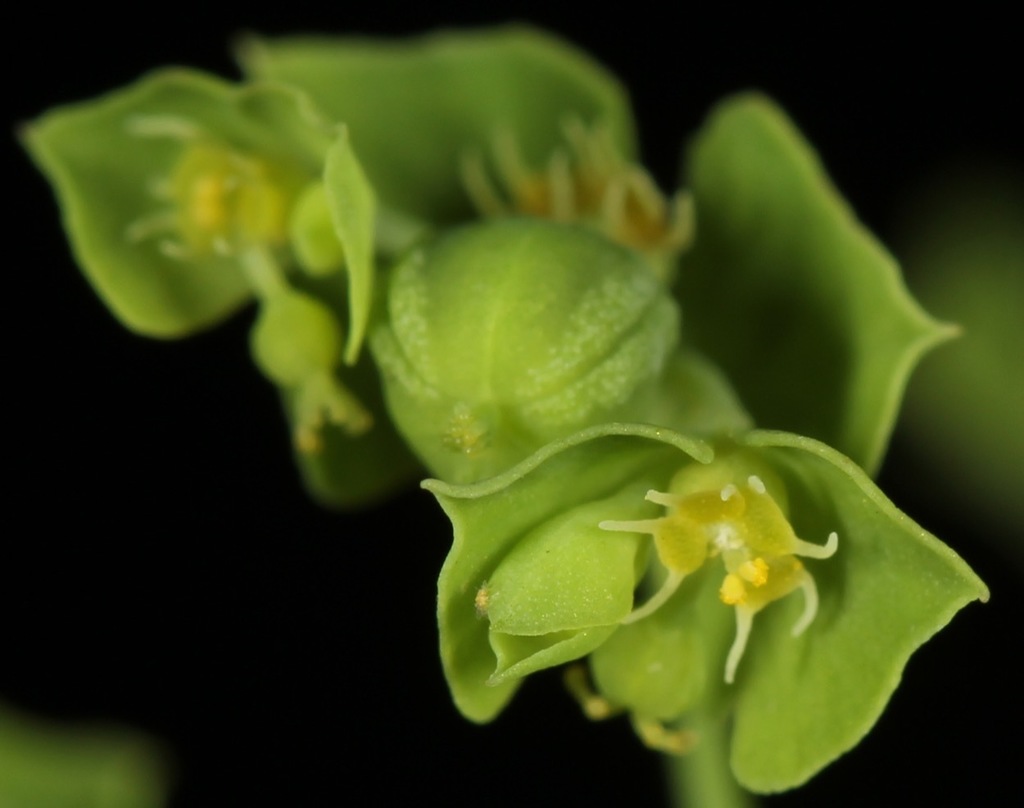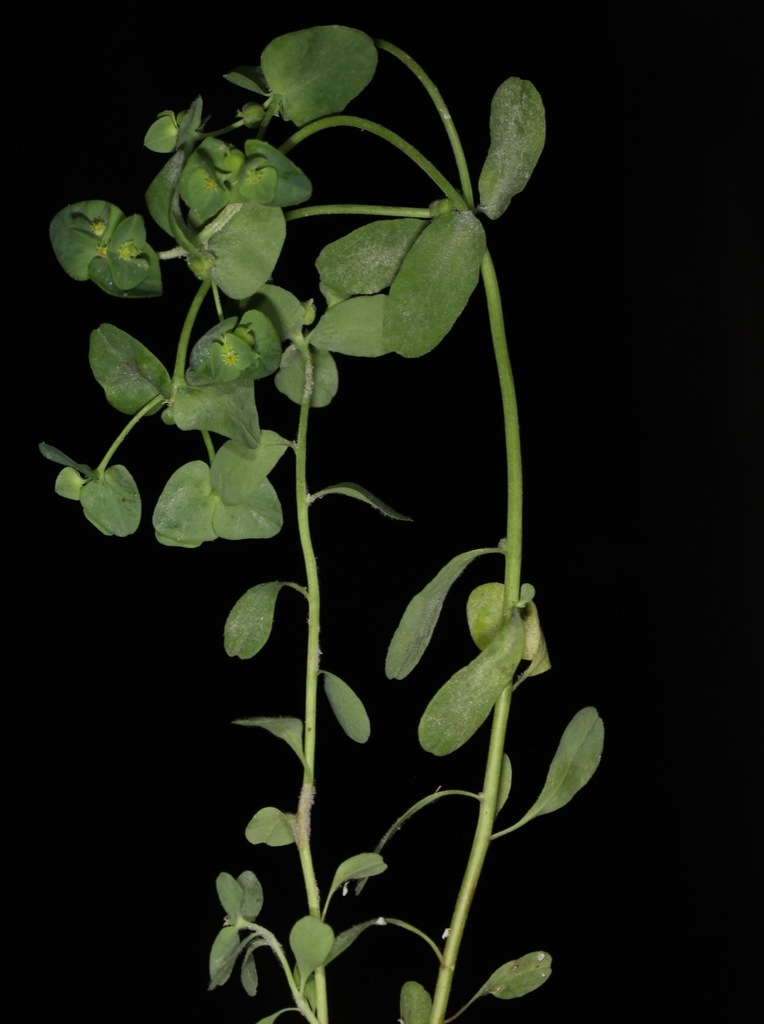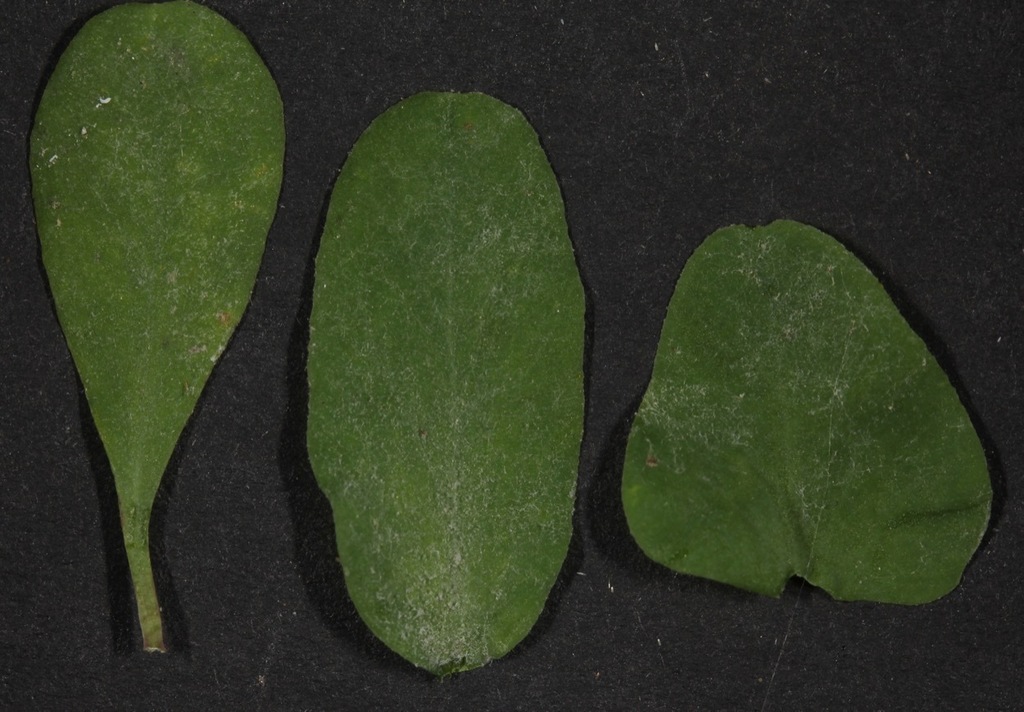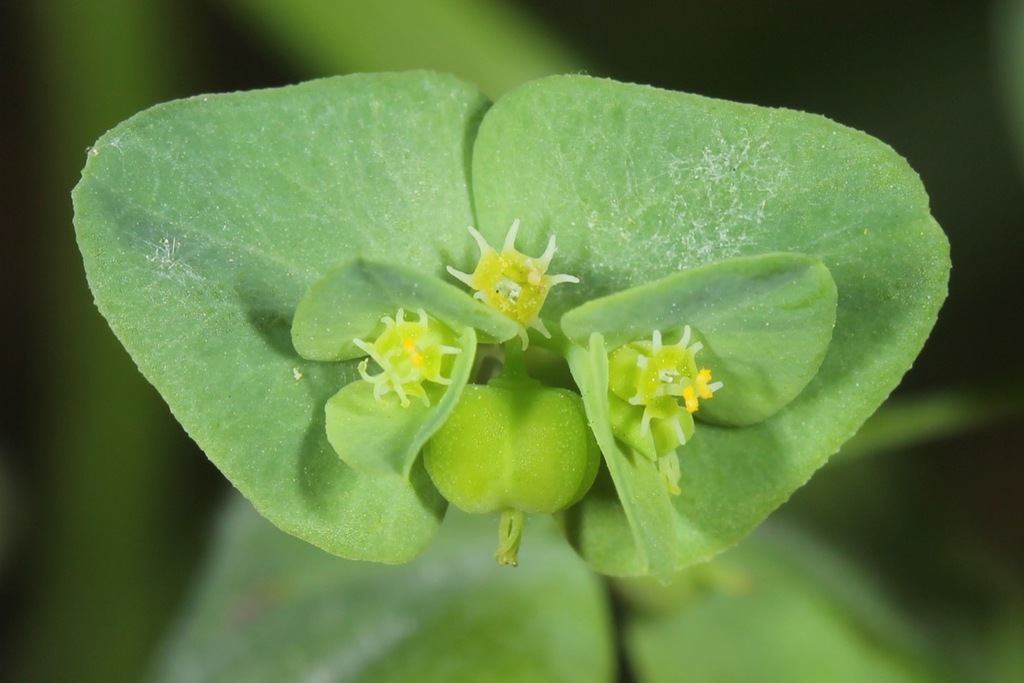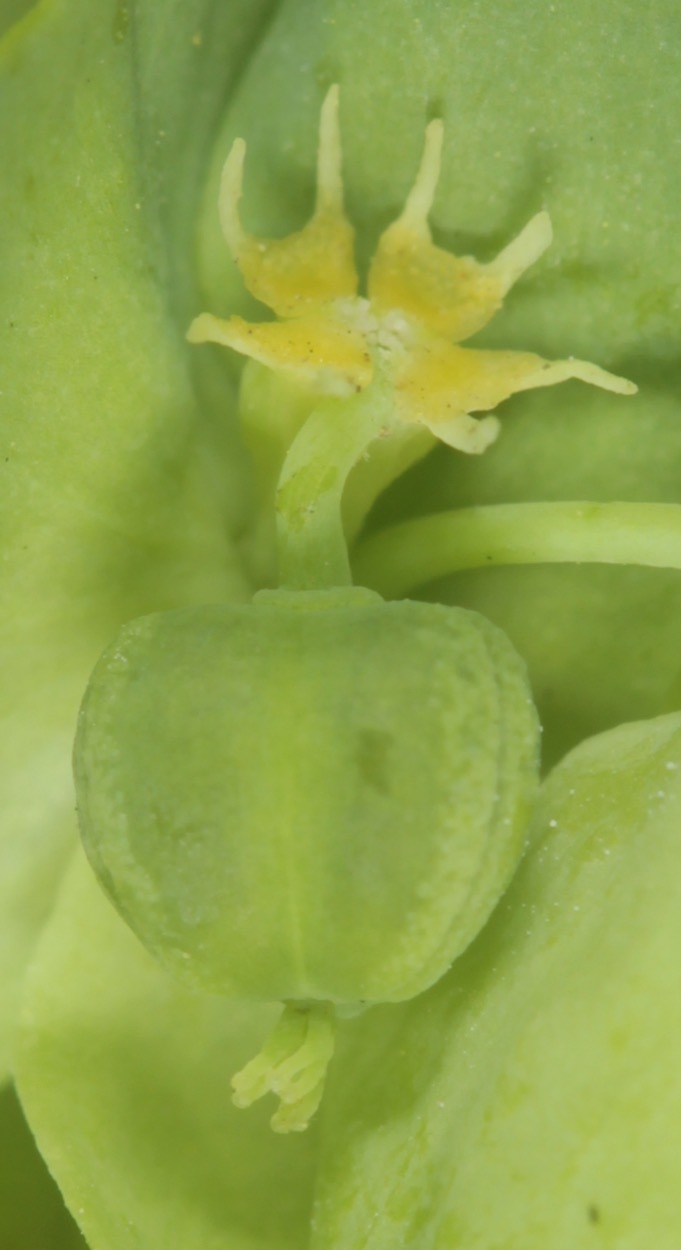iNaturalist projects:
Euphorbia species of the United States
Euphorbia of Mexico
Sandmats of the World
iNaturalist journal posts (general):
Lists and project info:
Species list for the United States
List of species that have not been observed on iNaturalist yet
Project observation fields explained
Tracked statistics
Tips:
Euphorbia, What to Photograph?
Tips on Harvesting and Photographing Seeds
Identification and taxonomy information:
What makes a good sandmat observation
Cyathium explained (Euphorbia PBI)
Cyathium explained in detail (journal post) and tips on cyathium dissection
Advanced Seed Morphology
Euhorbia PBI data portal (for finding species information including subgeneric taxa, nomenclatural information, and more)
Species commonly identified as Euphorbias
Euphorbia subgroups explained
Euphorbia marginata (Snow-on-the-Mountain) and E. bicolor (Snow-on-the-Prairie)
It's that time of year again: The spots of Spotted Spurge (Euphorbia maculata)
Section Nummulariopsis
Euphorbia albomarginata (Whitemargin Sandmat) and E. polycarpa (Smallseed Sandmat)
Euphorbia esula/virgata information (leafy spurges)
Detailed discussion
Discussion on E. saratoi
Flora of the Southern and Mid-Atlantic States (Weakley, draft 2015) (see pg. 675)
FNA treatment
General recomended external links:
Flora of North America
BONAP (for maps)
Euphorbia PBI
Euphorbia PBI species search
Tropicos (great way to find primary literature sources)
Biodiversity Heritage Library (great way to find primary literature sources)
GBIF (great way to find herbarium records)
Encyclopedia of life (often useful if you can find a good global map)
SEINet (great way to find herbarium records and photos)
Index herbariorum (useful in understanding what the herbarium abbreviations refer to)
Flora of the Southern and Mid-Atlantic States (Weakley, draft 2015) (see pg. 669)
Identification resources by Euphorbia subgroup
Section Alectoroctonum:
The eastern members of sect. Alectoroctonum
Euphorbia marginata (Snow-on-the-Mountain) and E. bicolor (Snow-on-the-Prairie)
Section Anisophyllum:
What makes a good sandmat observation
Euphorbia albomarginata (Whitemargin Sandmat) and E. polycarpa (Smallseed Sandmat)
It's that time of year again: The spots of Spotted Spurge (Euphorbia maculata)
The Weedy Species of Sandmats (Euphorbia sect. Anisophyllum) in Texas
Nathan Taylor's thesis: Explorations into Euphorbia sect. Anisophyllum (Euphorbiaceae) in the trans-Pecos region of Texas with a focus on the Fendleri Clade (I know, the title is very long)
Madagascar Species
Baja California Peninsula hub
Section Crepidaria:
Subgenus Esula:
Subgenus Esula explained
California Euphorbs of subgenus Esula
Texas Euphorbias, Subgenus Esula
Notes on cyathia with 5 glands
A few members of subgenus Esula sect. Helioscopia
Section Poinsettia:
Basic explaination of the Christmas Poinsettia
Poinsettia cyathia explaination
Section Nummulariopsis:
Section Nummulariopsis
State specific resources (not comprehensive and in progress)
Alabama:
Alabama Euphorbia species
Arizona:
City Spurges - Tucson
California:
Jepson eFlora
California Euphorbs of subgenus Esula
Calflora
City Spurges - San Diego
Florida:
Florida Euphorbia species
Atlas of Florida Plants
Section Nummulariopsis
New Mexico:
The status of the genus Chamaesyce in New Mexico
Texas:
Texas Euphorbia species list
The Weedy Species of Sandmats (Euphorbia sect. Anisophyllum) in Texas
City Spurges - DFW area
Sandmats (Euphorbia sect. Anisophyllum, previously Chamaesyce) of the Llano Estacado
Texas Euphorbias, the Tithymaloids
Nathan Taylor's thesis: Explorations into Euphorbia sect. Anisophyllum (Euphorbiaceae) in the trans-Pecos region of Texas with a focus on the Fendleri Clade (I know, the title is very long)
Outside North America
New Zealand Plant Conservation Network
NZ Flora (27 species listed)
European Euphorbia checklist - found here
References*
*Note that this is taken directly from my annotated reference list and is incomplete (there are many more that I have referenced and several of those below I have not completely read, especially those in other languages). Also, many of the citations are incomplete or are not consistantly formated. It is likely too long to be of much use here, but at least it can be referanced if anyone wonders where I am getting my information.
MY EUPHORBIA PUBLICATIONS
Master's Thesis: Explorations into Euphorbia sect. Anisophyllum (Euphorbiaceae) in the trans-Pecos region of Texas with a focus on the Fendleri Clade
Felger, R.S., S. Rutman, & N.C. Taylor. 2015. Ajo Peak to Tinajas Altas: A flora of southwestern Arizona. Part 13. Eudicots: Euphorbiaceae. Phytoneuron 2015:1–65..
Taylor, N.C. & M. Terry. 2015. Euphorbia abramsiana (Euphorbiaceae): New to Texas. Phytoneuron 2015-24:1–7. ISSN 2153 733X
Taylor N.C. & M. Terry. 2016. Euphorbia cryptorubra (Euphorbiaceae), a new species in Euphorbia subgenus Chamaesyce section Anisophyllum from Texas, U.S.A. and Chihuahua, Mexico. Journal of the Botanical Research Institute of Texas 10:1–9.
Atha, D., Levine, E., and Taylor, N. 2018. First report of Euphorbia hypericifolia (Euphorbiaceae) for New York state. Phytoneuron 2018-74: 1–4.
Mickley, J.G. and Taylor, N. In progress. Occurrence of Thymeleaf Sandmat Euphorbia serpillifolia Persoon (Euphorbiaceae) in Vermont.
TAXONOMY, DESCRIPTIONS, FLORAS, AND MAPS
Bentham, G. 1844. The botany of the voyage of H.M.S. Sulphur. Smith, Elder and Co., London, UK. http://www.biodiversitylibrary.org/item/15490
Berry, P.E., V. Steinmann, & Y. Yang. 2011. Proposal to conserve the name Euphorbia acuta Engelm. against E. acuta Bellardi ex Colla (Euphorbiaceae). Taxon 60:603–604.
Berry, P.E., J.A. Peirson, J.J. Morawetz, V.W. Steinmann, R. Riina, Y. Yang, D. Geltman, & N.I. Cacho. 2016. Euphorbia. Flora of North America Editorial Committee, eds. Flora of North America North of Mexico. Vol. 12. New York and Oxford.
Blake, S.F. 1922. New plants from Guatemala and Honduras. Contributions from the United States National Herbarium. Vol. 24, part 1.
Boissier, E. 1860. Centuria Euphorbiarum. Société de physique et d'histoire naturelle de Genève.
Boissier, E. 1862. Euphorbia sect. Anisophyllum. In A.P. de Candolle [ed.], Prodromus systematis naturalis regni vegetabilis, vol. 15, part 2, 11–52. Victor Masson & Fils, Paris, France.
Brown, N.E. 1911. Euphorbia. In Flora of tropical Africa vol. 6. [Authors for Euphorbiaceae: N.E. Brown, J. Hutchinson, & D. Prain]
Brown, N.E. 1925. Euphorbia. In Flora Capensis vol. 5, section 2. [Authors for Euphorbiaceae: N.E. Brown, J. Hutchinson, & D. Prain]
Burch, D. 1965. A taxonomic revision of the genus Chamaesyce (Euphorbiaceae) in the Caribbean. Ph.D. dissertation, University of Florida, Gainesville, Florida, USA.
Burch, D. 1965. Two species of Chamaesyce (Euphorbiaceae) new to the United States. Rhodora 67:185–186.
Burch, D. 1966. The application of the Linnaean names of some New World species of Euphorbia subgenus Chamaesyce. Rhodora 68:155–166.
Burch, D. 1966. Two new species of Chamaesyce (Euphorbiaceae), new combinations, and a key to the Caribbean members of the genus. Annals of the Missouri Botanical Garden 53:90–99.
Burch, D. 1969. Notes on the Galapagos Euphorbieae (Euphorbiaceae). Annals of the Missouri Botanical Garden 56:173–178.
Burger, W. & M. Huft. 1995. Flora Costaricensis: Family #113 Euphorbiaceae. Fieldiana: Botany No. 36.
Carr, W.R. & M.H. Mayfield. 1993. Chamaesyce velleriflora (Euphorbiaceae) new to Texas. Sida 15:550–551.
Carter, S. 1979. Some new Euphorbia species from East Africa. Kew Bulletin 35:413–421. http://www.jstor.org/stable/4114592
Carter, S. 1983. New taxa and notes on herbaceous species of Euphorbia from East and Northeast Africa. Kew Bulletin 39:643–652. http://www.jstor.org/stable/4108605
Carter, S. 1989. New taxa and taxonomic changes amongst herbaceous Euphorbia species from southern tropical Africa. Kew Bulletin 45:327–337. http://www.jstor.org/stable/4115690
Carter, S. & L.C. Leach. 2001. Euphorbiaceae part 2. Flora Zambesiaca Vol. 9 part 5.
Carter, S. & A.R. Smith. 1988. Euphorbiaceae (Part 2). Flora of Tropical East Africa. Royal Botanic Gardens, Kew, Richmond, England.
Correll, D. S. & M. C. Johnston. 1970. Manual of the vascular plants of Texas. Texas Research Foundation, Renner, Texas.
Croizat, L. 1943. Novelties in American Euphorbiaceae. Journal of the Arnold Arboretum 24:165–189.
Croizat, L. 1945. “Euphorbia chamaesyce” in the United States. Bulletin of the Torrey Botanical Club 72:312–318.
Farwell, O.A. 1936. Euphorbia pilulifera in Michigan. Rhodora 38:331–332.
Fawcett, W. & A.B. Rendle. 1910. Flora of Jamaica: Euphorbia. William Clowes and Sons, London.
Felger, R.S., S. Rutman, & N.C. Taylor. 2015. Ajo Peak to Tinajas Altas: A flora of southwestern Arizona. Part 13. Eudicots: Euphorbiaceae. Phytoneuron 2015:1–65.
Fernald, M.L. 1936. Dates of publication of Rydberg’s Flora of the Rocky Mountains and adjacent plains. Rhodora 38:329–331. Only cited here because of another citation.
Florence, J. 1996. Gallicae Polynesiae florae Praecursores. 1. Nouveautés taxonomiques dans les Euphorbiaceae, Piperaceae et Urticaceae. Bulletin du Muséum National d'Histoire Naturelle, Section B, Adansonia. sér. 4, Botanique Phytochimie 18:239–274.
Forbes, F.B. & W.B. Hemsley. 1889. Enumeration of all the plants known from China proper, Formosa, Hainan, the Corea, the Luchu archipelago, and the island of Hongkong; together with their distribution and synonymy. The Journal of the Linnaen Society 26:1–592.
Forster, P.I. & R.J.F. Henderson. 1995. New combinations in Chamaesyce (Euphorbiaceae) from Queensland, Australia. Novon 5:323–324.
Frajman, B. 2011. R. Hand (ed.). Supplementary notes to the Flora of Cyprus VII: Key to the species of Euphorbia subg. Chamaesyce from Cyprus. Willdenowia 41:346
Gage, A.T. 1914. New Euphorbiaceae from India and Malaya. Bulletin of Miscellaneous Information (Royal Botanic Gardens, Kew) 1914:236–241.
Gray, S.F. 1821. A natural arrangement of British plants, 2. Baldwin, London.
Govaerts, R., D.G. Frodin, & A. Radcliffe-Smith. 2000. World checklist and bibliography of Euphorbiaceae (and Pandaceae). The Royal Botanic Gardens, Kew.
Hadidi, M.N.E. 1973. The genus Euphorbia L. in Egypt I.: Section Anisophyllum Roep. Bulletin du Jardin botanique National de Belgique / Bulletin van de Nationale Plantentuin van België 43:83–100.
Halford, D.A. & W.K. Harris. 2010. A new species of Euphorbia subgenus Chamaesyce Raf. (Euphorbiaceae) from the Flinders Ranges, South Australia. Journal of the Adelaide Botanical Garden 24:43–46.
Halford, D.A. & W.K. Harris. 2012. A taxonomic revision of Euphorbia section Anisophyllum Roeper (Euphorbiaceae) in Australia. Austrobaileya 8:441–600. http://www.jstor.org/stable/41965600
Hargreaves, B.J. 1991. The spurges of Botswana. Botswana Notes and Records 23:115–158.
Hemsley, W.B. 1882. Botany. Biologia Centrali-Americana; or, contributions to the knowledge of the fauna and flora of Mexico and Central America. Vol. 3.
Herndon, A. 1993. A revision of the Chamaesyce deltoidea (Euphorbiaceae) complex of Southern Florida. Rhodora 95:38–51.
Herndon, A. 1993. Notes on Chamaesyce (Euphorbiaceae) in Florida. Rhodora 95:352–368.
Hooker, J.D. & G. Bentham. 1849. Flora Nigritiana: XCII. Euphorbiaceae. Niger Flora, Hippolyte Bailliere, London. 498–514.
Hügin, G. & H. Hügin. 1997. Die gattung Chamaesyce in Deutschland. Berichte Bayerische Botanische Gesellschaft 68:103–121.
Hutchinson, J. & J.M. Dalziel. 1952. Flora of West Tropical Africa, Vol. 1: 64. Euphorbia. Crown Agent of Overseas Governments and Administrations. Mill Bank, London.
https://archive.org/details/FloraOfWestTropi00hutc [Not sure if cited correctly. Cited in Bolaji et al. (2014), as: J. Hutchinson, J.M. Dalziel S.W.I., in: , second ed., Floral of West Tropical Africa, Vol. 1 Crown Agent of Overseas Governments and Administrations. Mill Bank, London, 1954, pp. 417e422 Part 1. p.]
Jercinovic, E. 2007. The status of the genus Chamaesyce in New Mexico. The New Mexico Botanist Newsletter 40:1–14.
Johnston, I.M. 1922. Undescribed plants mostly from Baja California. University of California Publications in Botany 7:437–446.
Johnston, M.C. & B.H. Warnock. 1960. Euphorbia jejuna, new species from western Texas. The Southwestern Naturalist 5:97–99.
Johnston, M.C. 1975. Studies of the Euphorbia species of the Chihuahuan Desert region and adjacent areas. Wrightia 5:120–143.
Kelaart, E.F. 1846. Flora Calpensis. John van Voorst, 1, Paternoster-Row, London.
Koutnik, D.L. 1985. New combinations in Hawaiian Chamaesyce (Euphorbiaceae). Brittonia 37:397–399.
Léonard, J. 1999. Flore et vegetation du Jebal Uweinat (desert de Libye: Libye, Egypte, Sudan). Bulletin du Jardin botaniqe National de Belgique / Bulletin van de Nationale Plantentuin van België 67:123–216.
Lorence, D.H. & W.L. Wagner. 1996. A new species of Chamaesyce section Sclerophyllae (Euphorbiaceae) from Kaua’i. Novon 6:68–71.
Linnaeus, C. 1753. Species plantarum. Stockholm.
Linnaeus, C. 1754. Genera plantarum. Stockholm.
Linnaeus, C. 1759. Systema naturae per regna tria naturae. Stockholm.
MacBride, J.F. 1951. Flora of Peru: Euphorbiaceae. Field Museum of Natural History: Botany 13:3–200.
Martin, W.C. & C.R. Hutchins. 1980. A flora of New Mexico. 2 vols. Vaduz.
Maya-Lastra, C.A. & C.A.A. Henao. 2010. Euphorbiaceae del Quindío. Centro de Estudios e Investigaciones en Biodiversidad y Biotecnologia, Armenia, Columbia.
Maya-Lastra, C.A. & V.W. Steinmann. 2015. Two new species of Euphorbia subg. Chamaesyce (Euphorbiaceae) from Baja California Sur, Mexico and their phylogenetic relationships. Phytotaxa 221:265–278.
Mayfield, M. H. 1991. Euphorbia johnstonii (Euphorbiaceae) a new species from Tamaulipas, Mexico, with notes on Euphorbia subsection Acutae. Sida 14:573–579.
Mayfield, M.H. 1993. New combinations in Chamaesyce A. Gray (Euphorbiaceae) from Texas and the Chihuahuan Desert. Phytologia 75:178–183.
McVaugh, R. 1961. Euphorbiae Novo-Galicanae. Brittonia 13:145–205.
McVaugh, R. 1993. Euphorbiae Novo-Galicanae Revisae. Contributions from the University of Michigan Herbarium 19:207–239.
McVaugh, R. 1995. Euphorbiacearum sertum Novo-Galicianarum revisanum. Contributions from the University of Michigan Herbarium 20:173–215.
Millspaugh, C.F. 1889. Contributions to North American Euphorbiaceae. Proceedings of the California Academy series 2, 2:217–230. (Contr. I)
Millspaugh, C.F. 1890. Contributions to North American Euphorbiaceae – II. Pittonia 2:82–90.
Millspaugh, C.F. 1898a. Notes on the Euphorbias of Dr. Edward Palmer's. Botanical Gazette 25:13–25. (Contr. III)
Millspaugh, C.F. 1898b. Notes and new species of the genus Euphorbia. Botanical Gazette 26:265–270. (Contr. IV)
Millspaugh, C.F. 1914. Contributions to North American Euphorbiaceae – V. Fieldliana 2:383–397.
Millspaugh, C.F. 1916. Contributions to North American Euphorbiaceae – VI. Fieldliana 2:401–412.
Murillo A., J. 2004. Las Euphorbiaceae de Colombia. Biota Colombiana 5:183–199.
Notaris, J. 1878. Repertorium florae Ligusticae: Euphorbia. Repertorium florae Logusticae:359–.
Oldenbourg, R. 1840–1906. Flora Brasiliensis: Euphorbia sect. Anisophyllum. [INCOMPLETE CITATION]
Pahlevani, A.H. & R. Riina. 2011. A synopsis of Euphorbia subgen. Chamaesyce (Euphorbiaceae) in Iran. Annales Botanici Fennici 48:304–316.
Parolly, G. & Ö. Eren. 2007. Contributions to the flora of Turkey, 2. Willdenowia 37:243–271.
Perez, J.M. 1895. Florula Gaditana part 5. Anales de la Sociedad Española de Historia Natural 24:279–335. [Pg. 501-557 of Florula Gaditana]
Poole, J.M., W.R. Carr, D.M. Price, & J.R. Singhurst. 2007. Rare Plants of Texas: A Field Guide. W.L. Moody Jr. Natural History Series, No. 37. Texas Parks & Wildlife Dept., Austin.
Powell, A.M. & R.D. Worthington. 2018. Flowering plants of the Trans-Pecos and adjacent areas. Sida, Botanical Miscellany 49. Botanical Research Institute of Texas, Fort Worth, Texas, U.S.A.
Prokhanov, A.I. 1949. R. Lavoot (Trans.). Flora of the U.S.S.R.: Euphorbia. Flora of the U.S.S.R. Vol. 14:233–378.
Rabeler, R.K. & A.F. Cholewa. 2014. Rediscovery of the types of Euphorbia sparsiflora (Euphorbiaceae) and Gutierrezia ionensis (Asteraceae) at MIN. Novon 23:319–320.
Raju, V.S. 1986. On the identity of Euphorbia wightiana Hook.f. Kew Bulletin 4:419–421.
Rao, K.S. & M.N.V. Prasad. 1987. Nomenclatural nodes on Chamaesyce of the Indian subcontinent (Euphorbiaceae). Taxon 36:761–762.
Richardson, J.W. 1968. The genus Euphorbia of the high plains and prairie plains of Kansas, Nebraska, South and North Dakota. The University of Kansas Science Bulletin 48:45–112.
Rydberg, P.A. 1918 (1917 given in publication). Flora of the Rocky Mountains and adjacent plains. Self published. [See Fernald 1936, Rhodora 38:329]
Shaw, H.K.A. 1972. The Euphorbiaceae of Siam. Kew Bulletin 26:191–363.
Shaw, H.K.A. 1977. Additions and corrections to the Euphorbiaceae of Siam. Kew Bulletin 32:69–83.
Sherff, E.E. 1938. Revision of the Hawaiian species of Euphorbia L. Annals of the Missouri Botanical Garden 25:1–95.
Silva, O.L.M.D., I. Cordeiro, & M.B.R. Caruzo. 2014. Synopsis of Euphorbia (Euphorbiaceae) in the state of São Paulo, Brazil. Phytotaxa 181:193–215.
Simmons, M.P. & W.J. Hayden. 1997. Revision of the cerraado hemicryptophytic Chamaesyce of Boissier’s “Pleiadeniae” (Euphorbiaceae). Brittonia 49:155–180.
Singhurst, J.R., A.K. Buthod, & W.C. Holmes. 2012. Chamaesyce cordifolia (Euphorbiaceae) new to Oklahoma. Phytoneuron 2012-10:1–4.
Small, J.K. 1933. Manual of the Southeastern flora. The University of North Carolina Press.
Standley, P.C. & J.A. Steyermark. 1949. Flora of Guatemala. Fieldiana Vol. 24.
Standley, P.C. 1923. Trees and shrubs of Mexico (Oxalidaceae–Turneraceae): 76. Euphorbiaceae. Contributions from the United States National Herbarium Vol. 23(part 3):595–653.
Steinmann, V.W. 2002a. A new combination and a new name in Mexican Euphorbiaceae. Acta Botanica Mexicana 61:59–60.
Steinmann, V.W. 2002b. Diversidad y endemismo de la familia Euphorbiaceae en México. Acta Botanica Mexicana 61:61–93.
Steinmann, V.W. 2003. Euphorbia nocens, formerly a variety of Euphorbia hirta (Euphorbiaceae). Acta Botanica Mexicana 64:37–44.
Steinmann, V.W. 2005. Euphorbia derickii (Euphorbiaceae), a new species from Central Mexico. Novon 15:219–221.
Steinmann, V.W. & J.M. André. Euphorbia (subgen. Chamaesyce sect. Anisophyllum) jaegeri, a shrubby new species from the deserts of California, United States. Aliso 30:1–4.
Steinmann, V.W. 2013. Three new species of Euphorbia subg. Chamaesyce (Euphorbiaceae) from Bolivia. Phytotaxa 114:23–32.
Steinmann, V.W. & E. Jercinovic. 2013. Euphorbia rayturneri (Euphorbiaceae), a new species from southwestern New Mexico, United States. Novon 22:482–485.
Steinmann, V.W. & R.S. Felger. 1997. The Euphorbiaceae of Sonora, Mexico. Aliso 16:1–71.
Taylor, N.C. & M. Terry. 2015. Euphorbia abramsiana (Euphorbiaceae): New to Texas. Phytoneuron 2015-24:1–7. ISSN 2153 733X
Taylor N.C. & M. Terry. 2016. Euphorbia cryptorubra (Euphorbiaceae), a new species in Euphorbia subgenus Chamaesyce section Anisophyllum from Texas, U.S.A. and Chihuahua, Mexico. Journal of the Botanical Research Institute of Texas 10:1–9.
Thellung, A. 1907. Die in Europa bis jetzt beobachteten: Euphorbia sect. Anisophyllum. Bulletin de L’Herbier Boissier 7:741–772.
Thellung, A. & O. Stapf. 1916. A new Euphorbia from St. Helena. Bulletin of Miscellaneous Information (Royal Botanic Gardens, Kew) 1916:200–201.
Torrey, J. 1859. Botany of the boundary: Euphorbiaceae. Report on the United States and Mexican boundary survey Vol. 2, part 1:185–202.
Torrey, J. 1887. Papers on Euphorbiaceae. The botanical works of the late George Engelmann. 434–449.
Turner, B.L., H. Nichols, G. Denny, & O. Doron. 2003. Atlas of the vascular plants of Texas. Vol. I–Dicots; Vol. II–Ferns, Gymnosperms, Monocots. Sida, Bot. Misc. 24, 1 and 2.
Turner, B.L. 2016. Taxonomy and distribution of Euphorbia chaetocalyx, E. crepidata (sic.) and E. fruticulosa (Euphorbiaceae). Phytologia 98:137–141.
Turner, B.L. 2016. Taxonomy and distribution of Euphorbia stictospora (Euphorbiaceae). Phytologia 98:284–287.
Ulloa, C.U., P. Acevedo-Rodríguez, S. Beck, M.J. Belgrano, R. Bernal, P.E. Berry, L. Brako, M. Celis, G. Davidse, R.C. Forzza, S.R. Gradstein, O. Hokche, B. León, S. León-Yánez, R.E. Magill, D.A. Neill, M. Nee, P.H. Raven, H. Stimmel, M.T. Strong, J.L. Villaseñor, J.L. Zarucchi, F.O. Zuloaga, P.M. Jørgensen. 2017. An Integrated Assessment of the Vascular Plants Species of the Americas. Science 358:1614-1617. doi/10.1126/science.aao0398 [not cited in database]
Ulloa, C.U., P. Acevedo-Rodríguez, S. Beck, M.J. Belgrano, R. Bernal, P.E. Berry, L. Brako, M. Celis, G. Davidse, R.C. Forzza, S.R. Gradstein, O. Hokche, B. León, S. León-Yánez, R.E. Magill, D.A. Neill, M. Nee, P.H. Raven, H. Stimmel, M.T. Strong, J.L. Villaseñor, J.L. Zarucchi, F.O. Zuloaga, P.M. Jørgensen. (2017 onwards). Vascular Plants of the Americas website. Tropicos, botanical information system at the Missouri Botanical Garden, St. Louis, Missouri, USA. http://www.tropicos.org/Project/VPA: 6 January 2018. [cited in database]
Warnock, B.H. & M.C. Johnston. 1960. New combinations in Texas Euphorbias of subgenus Chamaesyce. The Southwestern Naturalist 5:170.
Warnock, B.H. & M.C. Johnston. 1969. Euphorbia exstipulata var. lata and Euphorbia geyeri var. wheeleriana Warnock and Johnston, new taxa from western Texas. The Southwestern Naturalist 14:127–128.
Warnock, B.H. 1974. Wildflowers of the Guadalupe Mountains and the sand dune country, Texas. Sul Ross State University. [Species list: E. albomarginata, E. arizonica (photo E. setiloba), E. astyla (photo E. fendleri), E. carunculata, E. geyeri var. wheeleriana, E. glyptosperma, E. missurica, E. parryi, E. serpillifolia, E. serrula, E. stictospora (photo probably E. prostrata), E. villifera (photo E. serrula),]
Weatherby, C.A. 1910. Mexican phanogams: notes and new species. Proceedings of the American Academy of Arts and Sciences 45:422–428.
Webster, G.L. 1967. The genera of Euphorbiaceae in the Southeastern United States. Journal of the Arnold Arboretum 48:303–430.
Webster, G.L. & D. Burch. 1967. Flora of Panama: Euphorbiaceae. Annals of the Missouri Botanical Garden 54:211–350.
Wheeler, L.C. 1934a. California Euphorbia notes. Bulletin of the Southern California Academy of Sciences 33:109–110.
Wheeler, L.C. 1934b. Euphorbia on Guadalupe Island. Leaflets of Western Botany 1:128.
Wheeler, L.C. 1935. Euphorbia capitellata, its synonymy and range. Bulletin of the Torrey Botanical Club 62:537–538.
Wheeler, L.C. 1936a. Euphorbia in the Pacific States. Bulletin of the Southern California Academy of Science 35:127–147.
Wheeler, L.C. 1936b. Revision of the Euphorbia polycarpa group of the Southwestern United States and adjacent Mexico, a preliminary treatment. Bulletin of the Torrey Botanical Club 63:397–416, 429–450. http://www.jstor.org/stable/2480946
Wheeler, L.C. 1937. Notes on Euphorbia. Rhodora39:496.
Wheeler, L.C. 1939a. A miscellany of new world Euphorbiaceae. Contributions from the Gray Herbarium of Harvard University. 124:35–42. [Probably not E. punctulata as could be inferred by Burch, 1969. Tropicos suggests this.].
Wheeler, L.C. 1939b. A miscellany of new world Euphorbiaceae: II. Contributions from the Gray Herbarium of Harvard University. 127:48–80.
Wheeler, L.C. 1939c. Two ornamental Mexican Euphorbias. Journal of the Cactus & Succulents Society 11:44–47.
Wheeler, L.C. 1940. Dichapetalacea et Euphorbiaceae Novae. Proceedings of the Biological Society of Washington 52:7–12.
Wheeler, L.C. 1941. Euphorbia subgenus Chamaesyce in Canada and the United States exclusive of southern Florida. Rhodora 43:97–154, 168–205, 223–286. http://biodiversitylibrary.org/page/607893
Wheeler, L.C. 1942. Euphorbiaceae, pp. 523–547. In T.H. Kearney & R.H. Peebles Flowering plants and ferns of Arizona. United States Department of Agriculture Miscellaneous Publications No. 423. United States Government Printing Office, Washington.
Wheeler, L.C. 1945. Euphorbiaceae, pp. 105–109. In C.V. Morton, Mexican phanerogams described by M.E. Jones. Contributions from the United States National Herbarium 29:87–116.
Wheeler, L.C. 1960. Euphorbiaceae. pp. 501–520; 1058–1059. In T. H. Kearney & R.H. Peebles, Arizona flora with supplement. University of California Press, Berkeley and Los Angeles. 1085 p.
Wooton, E.O. & P.C. Standley. 1913. Descriptions of new plants preliminary to a report upon the flora of New Mexico. Contributions from the National Herbarium 16:109–196.
Wooton, E.O. & P.C. Standley. 1915. Flora of New Mexico. Contributions from the National Herbarium 19:9–794.
Zanoni, T.A. & W.R. Buck. 1999. Navassa Island and its flora: 2. Checklist of vascular plants. Brittonia 51:389–394.
DISCUSSIONS ON EUPHORBIACEAE ONLY
Webster, G.L. 1994. Synopsis of the genera and suprageneric taxa of Euphorbiaceae. Annals of the Missouri Botanical Garden 81:33–144.
THE CYATHIUM
Brown, R. 1818. Observations on the natural family of plants called Compositae. Transactions of the Linnean Society of London 12:76–142.
Croizat, L. 1936. On the classification of Euphorbia. I. How important is the cyathium? Bulletin of the Torrey Botanical Club 63:525–531.
Narbona, E., P.L. Ortiz, & M. Arista. 2002. Functional andromonoecy in Euphorbia (Euphorbiaceae). Annals of Botany 89:571–577. Not Read!
Prenner, G. & P.J. Rudall. 2007. Comparative ontogeny of the cyathium in Euphorbia (Euphorbiaceae) and its allies: Exploring the organ, flower, inflorescence boundary. American Journal of Botany 94:1612–1629.
Prenner, G., N.I. Cacho, D. Baum, & P.J. Rudall. 2010. Is LEAFY a useful marker gene for the flower-inflorescence boundary in the Euphorbia cyathium? Journal of Experimental Botany 62:345–350.
SEEDS
Jordan, M.S. & W.J. Hayden. 1992. A survey of mucilaginous testa in Chamaesyce. Collectanea Botanica 21:79–89.
Pahlevani, A. & H. Akhani. 2011. Seed morphology of Iranian annual species of Euphorbia (Euphorbiaceae). Botanical Journal of the Linnean Society 167:212–234.
SEEDLINGS
Hayden, W.J. 1988. Ontogeny of the cotyledonary region of Chamaesyce maculata (Euphorbiaceae). American Journal of Botany 75:1701–1713.
EUPHORBIA S.L. STRUCTURE
Bauer, G. S.N. Gorb, M.C. Klein, A. Nellesen, M. Tapavicza, & T. Speck. 2014. Comparative study on plant latex particles and latex coagulation in Ficus benjamina, Campanula glomerata and three Euphorbia species. Plos One 9:e113336. http://dx.doi.org/10.1371/journal.pone.0113336
Gunawardana, M., E.R. Hyde, S. Lahmeyer, B.L. Dorsey, T.P. La Val, M. Mullen, J. Yoo, R. Knight, & M.M. Baum. 2015. American Journal of Botany 102:1966–1977.
PHYLOGENETICS
Bruyns, P.V., R.J. Mapaya, & T. Hedderson. 2006. A new subgeneric classification of Euphorbia (Euphorbiaceae) based on ITS and psbA–trnH sequence data. Taxon 55:397–420. doi:10.2307/25065587
Horn, J. W., B. W. van Ee, J. J. Morawetz, R. Riina, V. W. Steinmann, P. E. Berry, & K. J. Wurdack. 2012. Phylogenetics and the evolution of major structural characters in the giant genus Euphorbia L. (Euphorbiaceae). Molecular Phylogenetics and Evolution 63:305–326. doi:10.1016/j.ympev.2011.12.022.
Horn, J. W., Z. Xi, R. Riina, J. A. Peirson, Y. Yang, B. L. Dorsey, P. E. Berry, C. C. Davis, & K. J. Wurdack. 2014. Evolutionary bursts in Euphorbia (Euphorbiaceae) are linked with photosynthetic pathway. Evolution 68:3485–3504.
Park, K.R., & R.K. Jansen. 2007. A phylogeny of Euphorbieae subtribe Euphorbiinae (Euphorbiaceae) based on molecular data. Journal of Plant Biology 50:644–649. doi:10.1007/BF03030608
Steinmann, V.W. & J.M. Porter. 2002. Phylogenetic relationships in Euphorbieae (Euphorbiaceae) based on ITS and ndhF sequence data. Annals of the Missouri Botanical Garden 89:453–490.
Yang, Y. & P. Berry. 2011. Phylogenetics of the Chamaesyce Clade (Euphorbia, Euphorbiaceae): Reticulate evolution and long-distance dispersal in a prominent C4 lineage. American Journal of Botany 98:1486–1503. doi:10.3732/ajb.1000496
Yang, Y., R. Riina, J.J. Morawetz, T. Haevermans, X. Aubriot, & P.E. Berry. 2012. Molecular phylogenetics and classification of Euphorbia subgenus Chamaesyce (Euphorbiaceae). Taxon 61:764–789. http://www.jstor.org/stable/41679308
Zimmermann, N.F.A., C.M. Ritz, & F.H. Hellwig. 2010. Further support for the phylogenetic relationships within Euphorbia L. (Euphorbiaceae) from nrITS and trnL–trnF IGS sequence data. Plant Systematics and Evolution 286:39–58. doi:10.1007/s00606-010-0272-7
E. PHOTOSYNTHETIC PATHWAYS AND ANATOMY
Aldhebiani, A. & S. Jury. 2013. Anatomical studies on the genus Euphorbia L. Saudi Arabia (Subgenera: Triucalli, Ermophyton, Esula and Chamaesyce). International Research Journal of Plant Science. 4:168–191. Several good references.
Batanouny, K.H., W. Stichler, & H. Ziegler. 1991. Photosynthetic pathways and ecological distribution of Euphorbia species in Egypt. Oecologia 87:565–569.
Christin, P.A., T.L. Sage, E.J. Edwards, R.M. Ogburn, R. Khoshravesh, & R.F. Sage. 2010. Complex evolutionary transitions and the significance of C3–C4 intermediate forms of photosynthesis in Molluginaceae. Evolution 65:643–660.
Kadereit, G., K. Bohley, M. Lauterbach, D.T. Tefarikis, & J.W. Kadereit. 2017. C3–C4 intermediates may be of hybrid origin – a reminder. New Phytologist 215:70–76.
Kakkar, L. & G.S. Paliwal. 1972. Studies on the leaf anatomy of Euphorbia: V. Epidermis. Proceedings of the Indian National Science Academy Part B Biological Sciences 40:55–67.
Webster, G.L., W.V. Brown, & B.N. Smith. 1975. Systematics of photosynthetic carbon fixation pathways in Euphorbia. Taxon 24:27–33.
Herbst, D. 1971. Disjunct foliar veins in Hawaiian Euphorbias. Science 171:1247–1248.
OTHER
Asgarpour, R., R. Ghorbani, M. Khajeh-Hosseini, E. Mohammadvand, & B.S. Chauhan. 2015. Germination of Spotted Spurge (Chamaesyce maculata) seeds in response to different environmental factors. Weed Science 63:502–510.
Čarni, A. & L. Mucina. 1998. Vegetation of trampled soil dominated by C4 plants in Europe. Journal of Vegetation Science 9:45–56.
Ernst, M., O.M. Grace, C.H. Saslis-Lagouakis, N. Nilsson, H.T. Simonsen, & N. Rønsted. 2015. Global medicinal uses of Euphorbia L. (Euphorbiaceae). Journal of Ethnopharmacology 196:90–101.
Moerman, D.E. 1998. Native American ethnobotany. Timber Press, Portland, OR.
Porcher, R.D. & D.A. Rayner. 2002. A guide to the wildflowers of South Carolina. Columbia.
Papers on organisms found on Euphorbia:
Evans, G.A. & A. Polaszek. 1997. Additions to the Encarsia parasitoids (Hymenoptera: Aphelinidae) of the Bemisia tabaci-complex (Hemiptera: Aleyrodidae). Bulletin of Entomological Research 87:563–571. Larvae on Chamaesyce leaves.
Fischer, E. W. Lobin, & J. Mutke. 2011. Striga barthlottii (Orobanchaceae), a new parasitic species from Morocco. Willdenowia 41:51–56. On succulent Euphorbias.
CHROMOSOMAL STUDIES
Keil, D.J. 1976. Chromosome numbers for Euphorbia (Euphorbiaceae) from western North America. Madroño 23:405–408.
Urbatsch, L.E., J.D. Bacon, R.L. Hartman, M.C. Johnston, T.J. Watson Jr., & G.L. Webster. 1975. Chromosome numbers for North American Euphorbiaceae. American Journal of Botany 62:494–500.
CYATHIAL STUDIES
Brown, R. 1818. Observations on the natural family of plants called Compositae. Transactions of the Linnean Society of London 12:76–142.
Croizat, L. 1936. On the classification of Euphorbia. I. How important is the cyathium? Bulletin of the Torrey Botanical Club 63:525–531.
Narbona, E., P.L. Ortiz, & M. Arista. 2002. Functional andromonoecy in Euphorbia (Euphorbiaceae). Annals of Botany 89:571–577. Not Read!
Prenner, G. & P.J. Rudall. 2007. Comparative ontogeny of the cyathium in Euphorbia (Euphorbiaceae) and its allies: Exploring the organ, flower, inflorescence boundary. American Journal of Botany 94:1612–1629.
Prenner, G., N.I. Cacho, D. Baum, & P.J. Rudall. 2010. Is LEAFY a useful marker gene for the flower-inflorescence boundary in the Euphorbia cyathium? Journal of Experimental Botany 62:345–350.
Wheeler, L.C. 1936. Revision of the Euphorbia polycarpa group of the Southwestern United States and adjacent Mexico, a preliminary treatment. Bulletin of the Torrey Botanical Club 63:397–416, 429–450. http://www.jstor.org/stable/2480946
